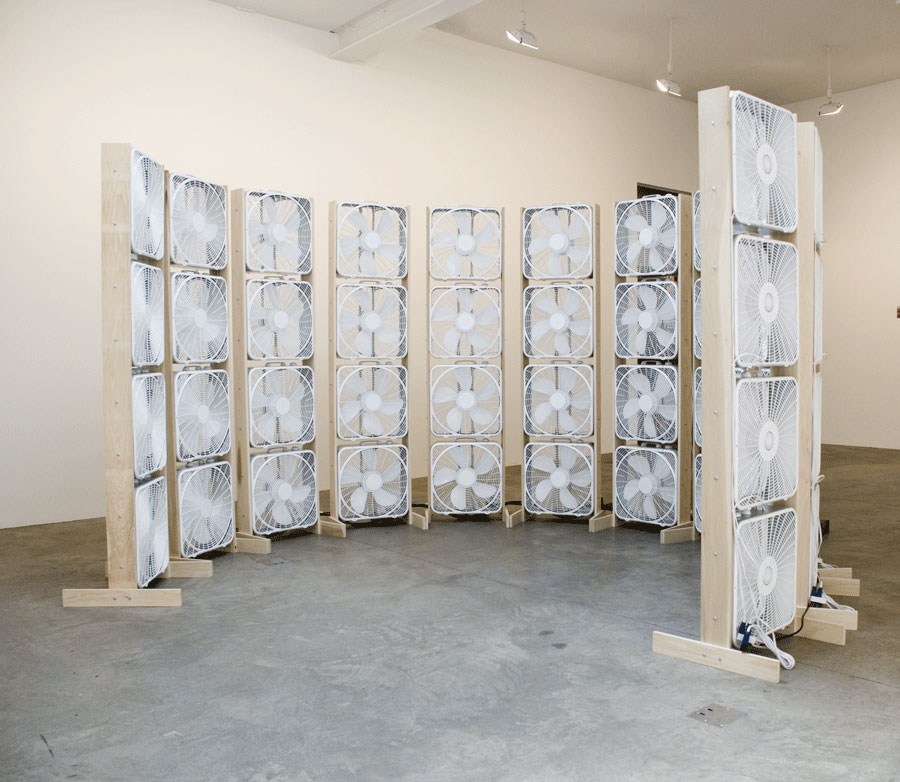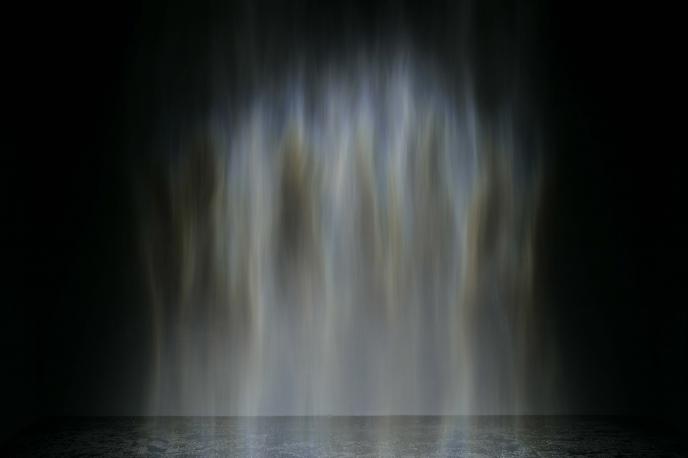The Five Senses: SMoCA
by Sarah Hamilton
For a very long time, I have advocated for art, and art experiences, that engaged numerous senses – not just the primary one and a half that the term “visual art” aims for. There are plenty of artists out there that do engage numerous senses, striving to create an environment, not just something to look at and maybe hear. So I was very excited to review The Five Senses exhibition at the Scottsdale Museum of Art.
The exhibition is designed very simply – five artist’s works are used to articulate each one of the five senses. The works are contemporary, but not new, spaning from 1967-2007, but this too is ok, as it gives a new perspective to established artists and allows the theme to compliment the works without being overbearing. An excellent example is Janet Cardiff’s Forty Part Motet, a work Cardiff is famous for. In most contexts, Cardiff’s works have been exhibited as sound pieces, but in the context of the five senses, the auditory element takes over. Cardiff’s installation is spare, with forty speakers standing at human height, projecting the voices of individual choir members. Upon first entering the gallery, the speakers were performing Thomas Tallis’ Spem in alium. In many ways, the piece is a gothic composition, at once ominous and overwhelming – apt to throw most listeners off. That being said, being given the chance to sit in the middle of the room and let the music wash over you is a great exercise in listening. Keep your eyes open, and you may be underwhelmed by the spare installation and bright lights, but with your eyes closed, the music takes over not only your audile senses, but all of them, and has the ability to transport you through time and space. This is one of the most wonderful, most transcendent characteristics of music, and it is one that Cardiff translates well.

While it feels whole, this is not the complete installation. As soon as the choir finishes performing, there are a few moments of silence before a man coughs, and then another man coughs. Suddenly, you hear voices all over the room warming up their vocal chords, laughing with friends and clearing their throats. The experience is disarming, as you turn to look the interloper in the eye, and find only a speaker in his place.
This subversion permeates other pieces as well. Spencer Finch’s 2 hours, 2 minutes, 2 seconds (Wind at Walden Pond) is a bank of fans placed in a semi-circular arrangement. Each has been carefully calibrated to the strength and direction of the wind on a particular day and in a particular place. I wondered, as I stood there, slightly shivering in the mild gusts, if I had been to Walden Pond and stood on its shores, what kind of nostalgia this installation would bring back for me. But then, I think of other shores I have stood on, on mild days at the end of winter and consider this breeze against those places. Weekends with friends, the faint smell of blue algae in the water and an overwhelming desire to go swimming even though it is ten degrees too cold. Here, on the edge of someone else’s memory, we can only scavenge our own.

Similarly, Olafur Eliasson’s Beauty attempts to remove you from the structure of the gallery, and give the viewer an exquisite visual experience. A dark room, concealed by a short winding path in the back of the gallery reveals an ethereal visual phenomenon, composed of water misting into a spotlight. The darkness of the space makes the rainbow effect of the mist appear all the more mystical and delicate, and yet the installation is so simple. The water hangs in the air like silk, or hair flowing down one’s back. It is terribly breathtaking, augmented by the sweet and humid air the mist creates.

In the last room of the exhibition are the companion senses, smell and taste. Ernesto Neto’s Cai Cai Marrom is a peculiar sculpture that consists of long nylon tubes filled with spices like turmeric, pepper and cinnamon. Dust from the spices piles on the floor under the pockets, and while the scent has been with you since you entered the gallery, it is strongest here. The combination of the spices is at once distinct and subtle. My own experiences with these spices are limited, so the over all affect is limited on me – mostly reminiscent of a cedar sauna. However next to Roelof Louw’s Soul City (Pyramid of Oranges), it brings back memories of pomanders and the holidays. The oranges are unevenly arranged as visitors have picked off oranges here and there. The piece and navigation of the exhibition alike is designed for people to leave with the taste of orange in their mouths.

This last work may be most indicative of a strong tie to relational aesthetics, with all this tasting and feeling and such. But the theory of relational aesthetics is to create a bridge – a connection, or a relationship. The Five Senses shows no interest in bridging us to our fellow man, instead turning senses in on us, giving us the space to explore the very basics of our physical cognitive processes. What is so charming about The Five Senses is how well it balances its competing interests in sensation. SMoCA could have approached this concept to privilege any one of the artists, just as it could have privileged any one of the senses. And yet, with ample room for each work to breathe, the exhibition allows the works to form a holistic thought; that each of the senses carries with it a way of knowing, and that art can engage each one.
The Five Senses at SMoCA runs through May 4, 2014.